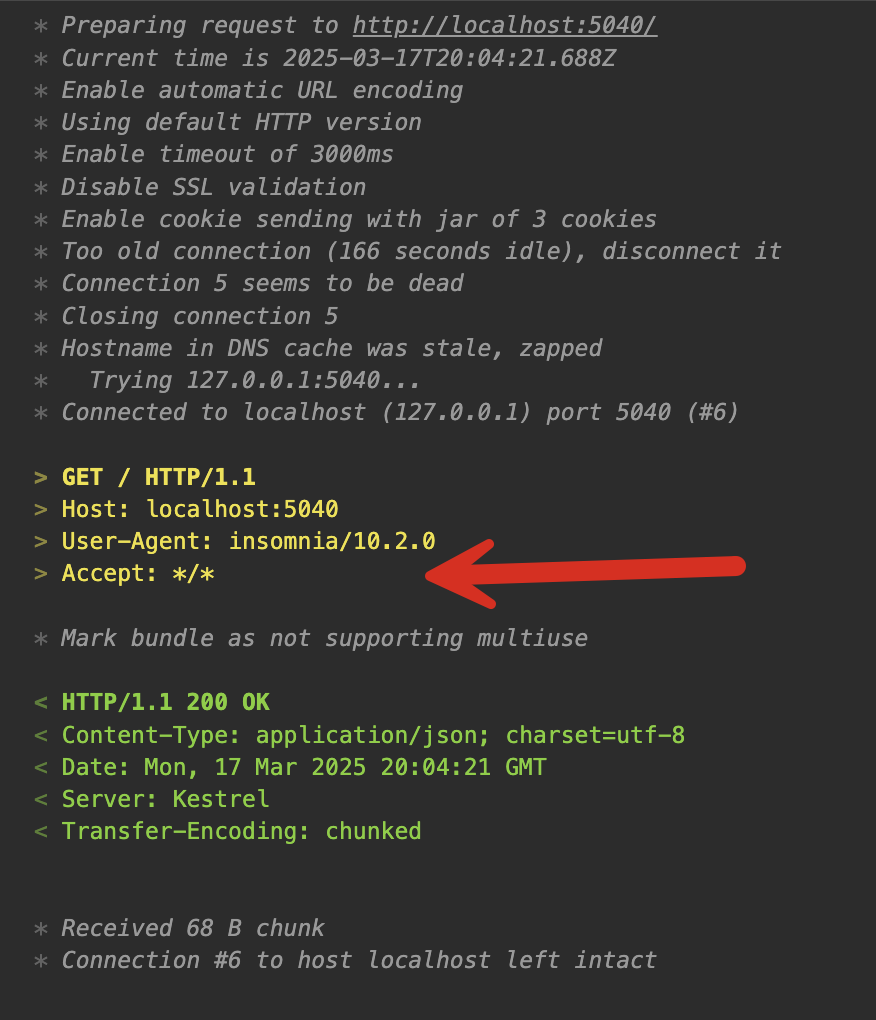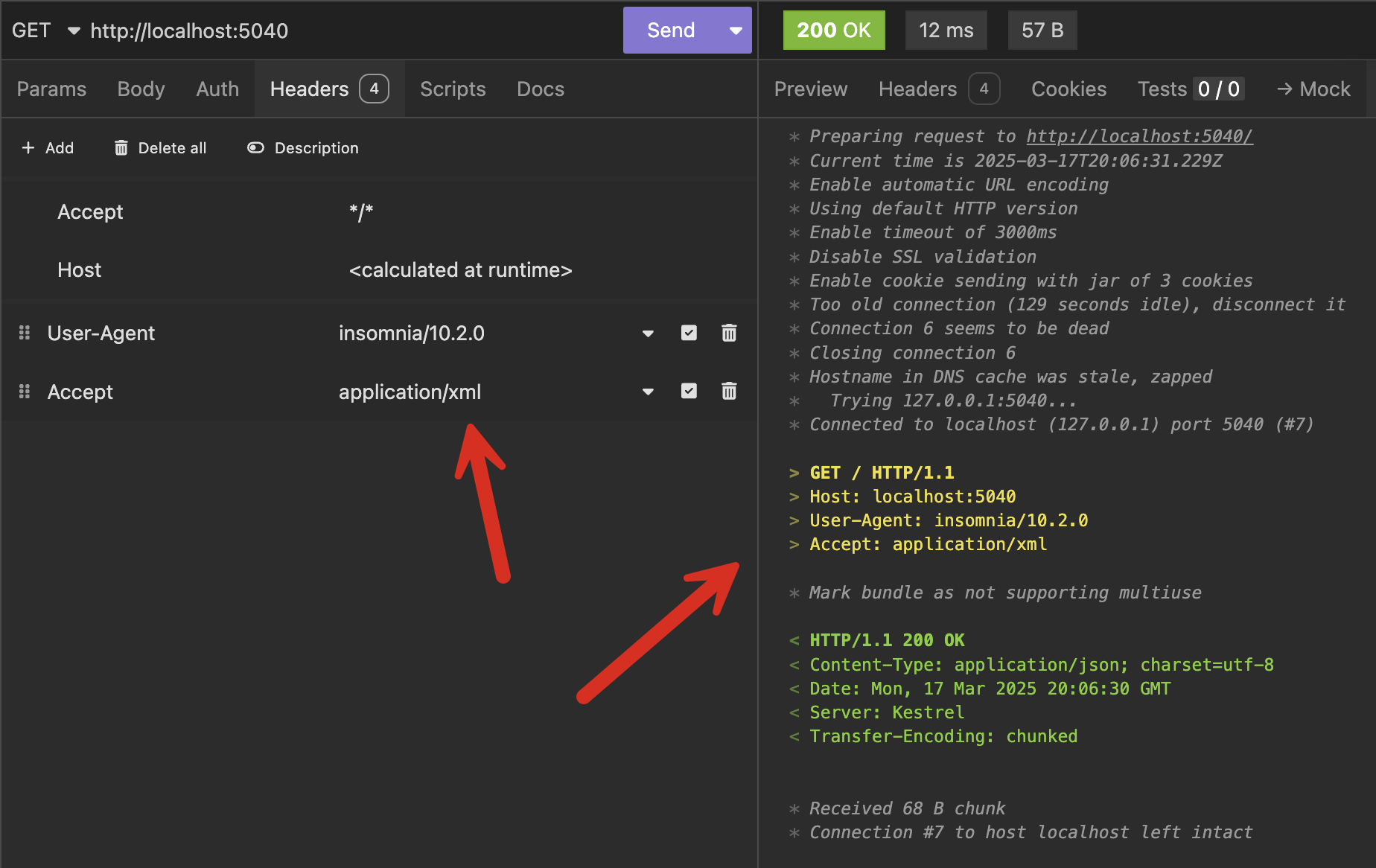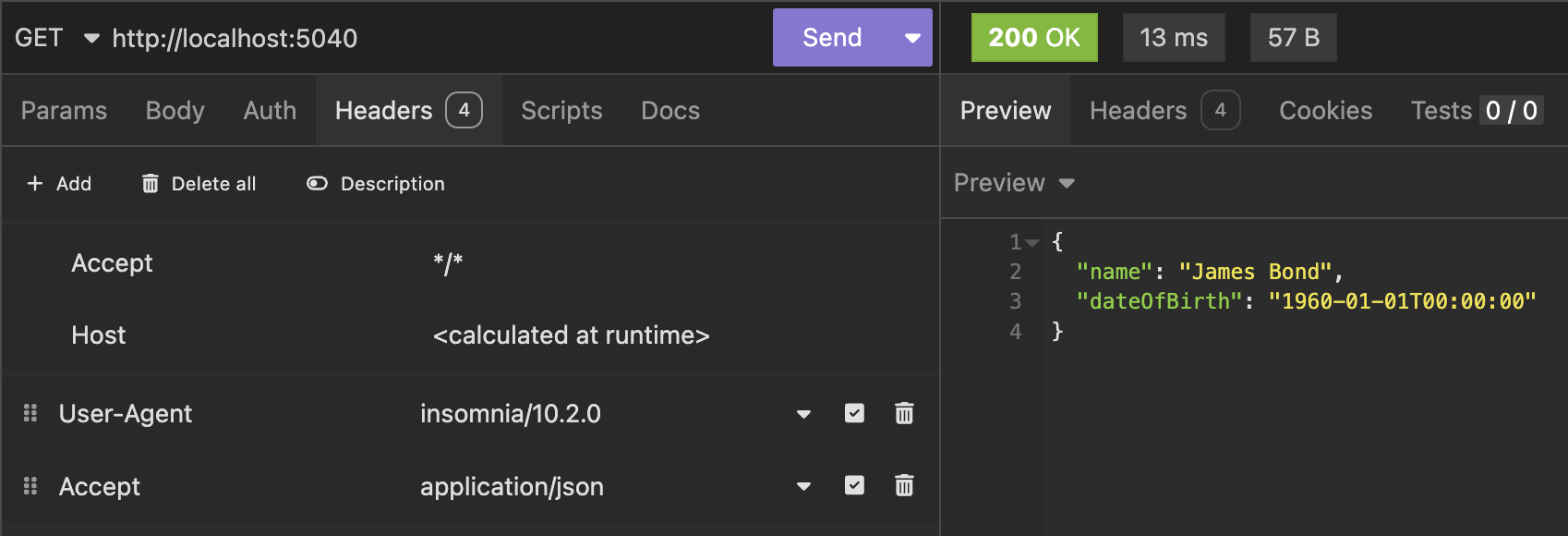Conditionally Output XML Or JSON Using ASP.NET Minimal API
[ASP.NET, C#, XML, JSON, StarLibrary, Carter]
Today, in 2025, a vast majority of APIs are JSON APIs.
However, you might be providing services to a client wanting the data in a different format, say XML.
In this post, we will build such an API.
The first step is to create a web project.
dotnet new web -o XMLSerialization
From that folder, we add the package Carter
dotnet add package Carter
Carter is a library that makes it much easier to modularize your minimal API endpoints.
Next, we will define our sample type:
public class Spy
{
public string Name { get; set; }
public DateTime DateOfBirth { get; set; }
}
We then write a module, a class in which we define and configure our endpoint.
public class SpyModule : ICarterModule
{
// Add a route
public void AddRoutes(IEndpointRouteBuilder app)
{
// Set the route path
app.MapGet("/", (HttpResponse resp) =>
{
// Create object
var spy = new Spy()
{
Name = "James Bond",
DateOfBirth = new DateTime(1960, 1, 1)
};
// Return our object
return spy;
});
}
}
Finally, we configure our startup to set up Carter.
using Carter;
var builder = WebApplication.CreateBuilder(args);
// Add Carter support to the services
builder.Services.AddCarter();
var app = builder.Build();
// Scan and register all Carter modules
app.MapCarter();
app.Run();
If we run the endpoint, we will see the following:

As indicated earlier, JSON is the default format if none is specified.
The raw request to the API looks like this:

Clients who wish to specify an alternate format do so by setting the appropriate request header - Accept.
If we wanted to request the data in XML, we would set the following header:
Accept: application/xml

Despite this, the response is still in JSON.
We need to update our endpoint so that it interrogates the request and then decides how to respond, a process called negotiation.
Given there is already a handler for JSON, we need to write one for XML, and we do this by writing a class that implements the IResponseNegotiator interface.
It will look like this:
using System.Net.Mime;
using System.Runtime.Serialization;
using Carter;
using Microsoft.Net.Http.Headers;
public class XMLResponseNegotiator : IResponseNegotiator
{
// Establish if the client had indicated it wanted xml
public bool CanHandle(MediaTypeHeaderValue accept)
{
return accept.MatchesMediaType(MediaTypeNames.Application.Xml);
}
// Handle the request
public async Task Handle<T>(HttpRequest req, HttpResponse res, T model, CancellationToken ct)
{
// Set the content type
res.ContentType = MediaTypeNames.Application.Xml;
// Create a serializer for the model type, T
var serializer = new DataContractSerializer(typeof(T));
// Create a memory stream
using (var ms = new MemoryStream())
{
// Write the object
serializer.WriteObject(ms, model);
// Set the stream position to 0, for writing to the response
ms.Position = 0;
// Write the memory stream to the response Body
await ms.CopyToAsync(res.Body, ct);
}
}
}
Next, we update our endpoint to delegate handling to the injected response.
Rather than directly returning our Spy object, we use the Negotiate response method.
// Delegate the handling via content negotiation
return resp.Negotiate(spy);
Finally, we update our startup to configure Carter and register this ResponseNegotiator
// Add Carter support to the services
builder.Services.AddCarter(configurator: c =>
{
// Register a XML response negotiator
c.WithResponseNegotiator<XMLResponseNegotiator>();
});
Finally, we send an XML request.

We can see here our response is coming back in XML.
If we send a JSON request:

Our API can now respond in both XML and JSON
TLDR
To allow handling multiple response formats, implement the IResponseNegotiator method and register that class with Carter at the application startup.
The code is in my GitHub.
Happy Hacking!